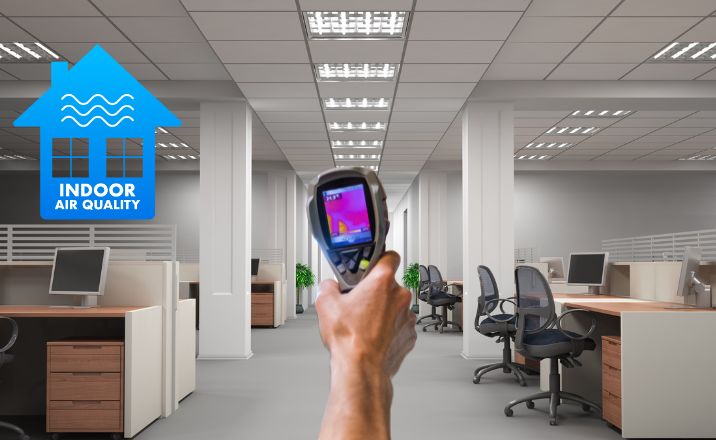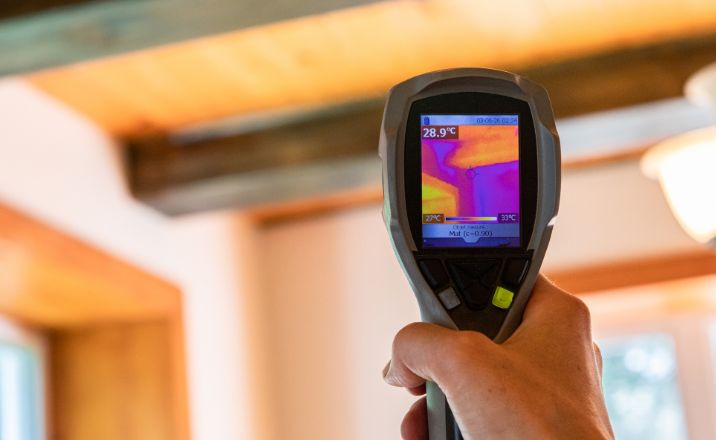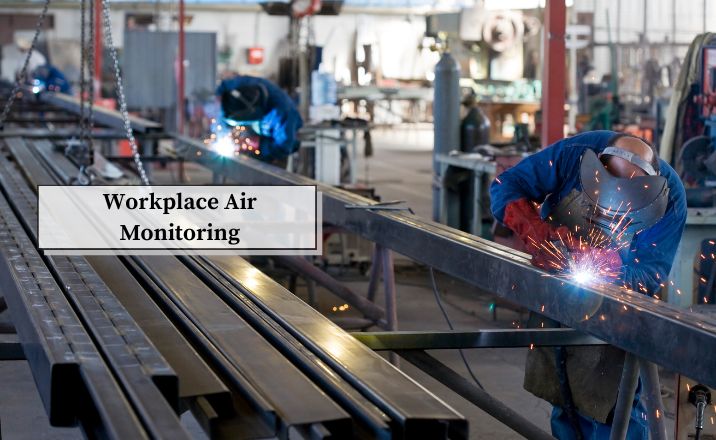Unseen Threats: The Importance of Regular Indoor Air Quality Monitoring

In today’s world, where we spend up to 90% of our time indoors, the quality of the air we breathe inside our homes, offices, and public spaces has become a critical concern. Air pollution can originate from numerous sources, including construction materials, consumer products, mold, insects, and inadequate ventilation systems. These contaminants can accumulate to dangerous levels, posing health risks such as respiratory issues and allergies. Regular air testing ensures that air quality meets safety standards, safeguarding health and enhancing overall well-being.
Indoor air quality (IAQ) monitoring is essential because poor indoor air quality can lead to a range of health issues, from minor irritations to serious respiratory conditions. This blog aims to shed light on the importance of Indoor air quality monitoring, what it involves, and why you should consider professional testing services.
What is Indoor air quality monitoring?
Indoor air quality (IAQ) refers to the air quality within and around buildings and structures, especially as it relates to the health and comfort of building occupants. Understanding and controlling common pollutants indoors can help reduce your risk of indoor health concerns.
Health effects from indoor air pollutants may be experienced soon after exposure or, possibly, years later. These pollutants can include:
- Particulate Matter (PM): Tiny particles that can be inhaled and cause respiratory problems.
- Volatile Organic Compounds (VOCs): Chemicals emitted as gases from certain solids or liquids, such as paints and cleaning products.
- Carbon Dioxide (CO2): High levels can indicate poor ventilation.
- Carbon Monoxide (CO): A colorless, odorless gas that can be deadly in high concentrations.
- Mold and Mildew: Fungi that can cause allergic reactions and respiratory issues.
- Radon: A naturally occurring radioactive gas that can cause lung cancer.
Why is Indoor Air Quality Monitoring Important?
- Health Protection: Poor Indoor air quality can cause headaches, dizziness, fatigue, and long-term conditions such as asthma and chronic respiratory diseases.
- Comfort: Improving Indoor air quality can enhance overall comfort, making environments more pleasant and productive.
- Compliance: Many industries have regulations and standards for Indoor air quality that must be met to ensure a safe working environment.
- Energy Efficiency: Identifying and mitigating pollutants can lead to more efficient HVAC systems, saving energy and reducing costs.
How is Indoor air quality Testing Conducted?
Indoor air quality monitoring typically involves the following steps:
- Initial Assessment: A thorough inspection to identify potential sources of pollutants and areas of concern.
- Sampling: Collecting air samples using specialized equipment to measure the concentration of various pollutants.
- Analysis: Laboratory analysis of the samples to determine the types and levels of pollutants present.
- Reporting: Detailed reports that include the findings, health implications, and recommendations for improving Indoor air quality.
Who Should Consider Indoor air quality monitoring?
- Residential Buildings: To ensure a healthy living environment, especially if there are young children, elderly, or individuals with respiratory issues.
- Corporate offices: To provide a safe and comfortable workplace, which can enhance productivity and reduce sick days.
- Schools: To protect children, who are more vulnerable to pollutants.
- Hospitals: To maintain sterile environments and protect patients with weakened immune systems.
- Industrial Settings: To comply with regulations and protect workers from exposure to harmful substances.
What are the parameters for Indoor Air Quality Monitoring?
Key parameters typically measured in Indoor air quality monitoring include:
- Temperature and Humidity: These affect comfort and can contribute to mold growth.
- Carbon Dioxide (CO2): High levels can indicate poor ventilation.
- Particulate Matter (PM2.5 and PM10): These tiny particles can cause respiratory issues.
- Volatile Organic Compounds (VOCs): Emitted from various sources, these can cause both short-term and long-term health effects.
- Carbon Monoxide (CO): A potentially lethal gas produced by combustion.
- Formaldehyde: Often found in building materials and furniture.
- Radon: A naturally occurring radioactive gas that can accumulate in buildings.
- Mold and Mildew: These can cause allergic reactions and other health issues.
- Nitrogen Dioxide (NO2): Often from combustion sources, it can cause respiratory problems.
- Ozone: While beneficial in the upper atmosphere, it’s harmful at ground level.
Why Choose Envirocare Labs?
Envirocare Labs is equipped with state-of-the-art equipment and the latest technology to provide reliable and accurate air quality analysis. Our dedication to quality service, timely results, and expert guidance from our highly skilled team has established us as a trusted partner for numerous leading brands in India. With a comprehensive suite of air testing services, we are your go-to solution for all analytical needs.
Services We Offer in Indoor air quality monitoring:
- Temperature
- Relative Humidity
- Air Movement
- Respirable Suspended Particulate Matter (RSPM)
- Carbon Dioxide (CO2)
- Carbon Monoxide (CO)
- Nitrogen Dioxide (NO2)
- Ozone (O3)
- Formaldehyde
- Total Volatile Organic Compounds (TVOC)
- Airborne Bacteria (Total Plate Count)
- Yeast and Mold
Choose Envirocare Labs for a comprehensive and reliable approach to ensuring the highest standards of Indoor air quality.
Conclusion
Indoor air quality testing is a crucial tool in maintaining healthy and productive indoor environments. From basic understanding to advanced implementation, Indoor air quality monitoring helps identify potential health hazards, improve comfort, ensure regulatory compliance, and optimize building performance. As we continue to spend more time indoors, the importance of Indoor air quality testing will only grow, making it an essential practice for building owners, managers, and occupants alike. By prioritizing Indoor air quality, we can create safer, healthier, and more comfortable spaces for everyone.
Reference:



